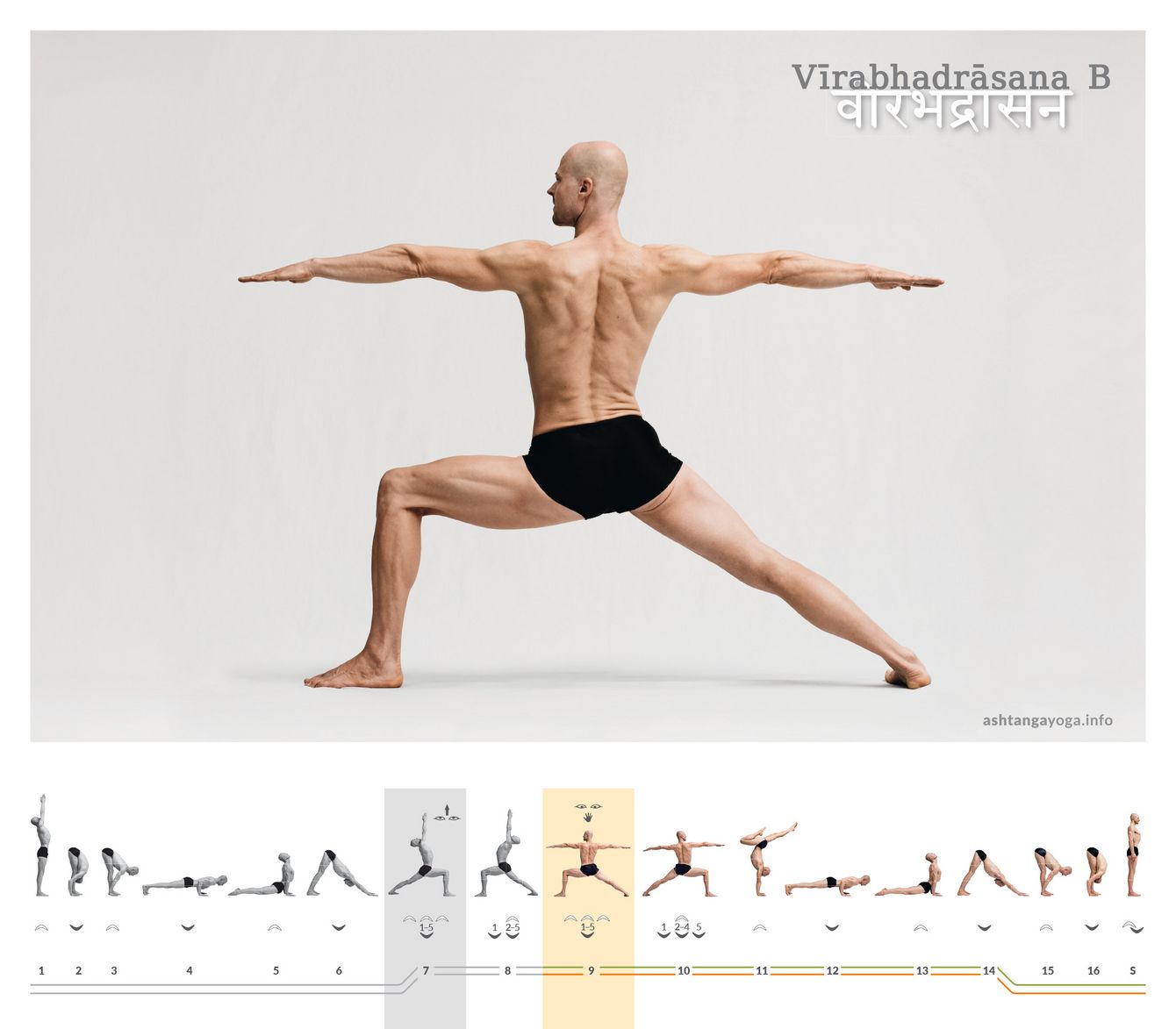

The flow of movements of this pose continue directly from the last one (greyed out, description can be found on the previous page).
Vinyāsa 9 – Inhale. 5 breaths. inhale:
At the end of the fifth exhalation, slowly lower the arms. Inhale and slide the feet into a wider stance so that the hips come into external rotation to the side of the room and lengthen the arms horizontally. Follow with your gaze to the left hand and beyond until the fifth breath. Stay for one more inhalation.
Caution: Now the heels are on one line and the rear foot is only slightly turned outward (approximately 5 degrees). Your front knee points toward the front foot and is directly above the ankle.
Vinyāsa 10 – Exhale. 5 breaths:
At the end of the fifth exhalation, switch sides. Stay here with your gaze following your right hand and beyond for five breaths.
Caution: Even when the pelvis is to the side in this position, the first alignment principle to prioritize is maintaining the front knee in the direction of the foot. The flexibility of the hip joint will determine how far to take the back foot out, and you will know when it is right because you can maintain proper form in the direction of the knee.
Vinyāsa 11 – Inhale:
At the end of the fifth exhale, lower the arms and place the hands on the floor. Inhale as much weight onto the hands as possible. With a little practice, you will be able to balace on your hands maintaining this leg position.
Vinyāsa 12 to 14:
Follow the flow of movements until you are back to downward dog.
In the traditional count, from here you flow directly into the next posture.
Effect: With the transition from Vīrabhadrāsana A to B you laterally explore external rotation at the hip as you strengthen and lengthen. Proprioception and coordination are key focal points of this pose. These are necessary to find a geometrically elegant pose where your arms are stretched horizontally and the hips are opened.


 Dr. Ronald Steiner
Dr. Ronald Steiner
 Richard Pilnick
Richard Pilnick

Messages and ratings